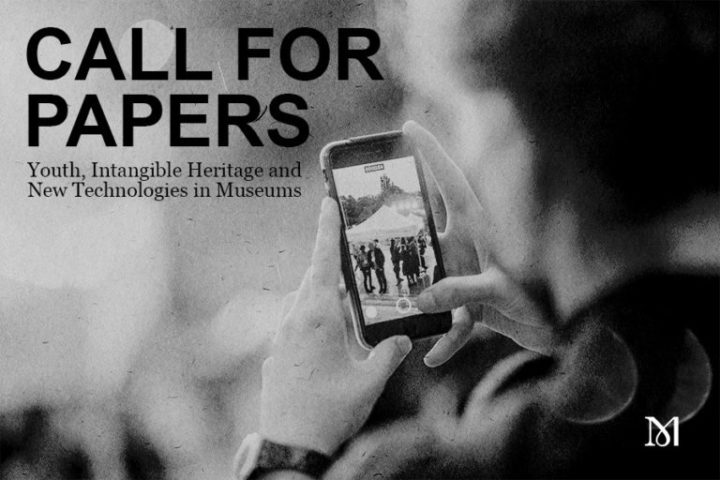The 27th ICOM General Conference will take place in Dubai in November 2025. The theme of the Conference is: ‘The Future of Museums in Rapidly Changing Communities’.
Three sub-themes have been identified by the organisers:
- Intangible Heritage
- Youth Power
- New Technologies
We wish that the issue of Museum International to be published in summer 2025 contributes to the reflection of museum professionals on these topics, and we’ve chosen to unite them all under the banner of youth. Because it is young people who are rapidly changing the communities with which museums collaborate or learn to interact. Because they were born with the digital technologies that museums are gradually appropriating to evolve and reinvent themselves. Because it is for them that intangible heritage must be preserved, but also because they will be the ones to pass it on to future generations, and because they are today the creators of tomorrow’s tangible and intangible heritage. In short, young professionals and young audiences hold the future of museums.
All proposals submitted will be assessed for suitability, and if chosen, the subsequent articles will go through a double-blind peer review process. The issue is expected to be published, in collaboration with Taylor&Francis/Routledge, in summer 2025.
Deadline: 7 August 2024
Youth, Intangible Heritage and New Technologies in Museums
Vol. 76 Nº 303 – 304
The role of youth has often been overlooked in cultural studies, particularly within museums and heritage institutions. It is true that despite making up the majority of the population globally, young people are sometimes marginalised in governance, operational participation, and content development in these spaces. However, recognising and engaging young people in these processes is essential, given their dynamic role as inheritors and innovators within their communities. By actively involving youth in the safeguarding of cultural heritage, they can reaffirm their own identities, but also contribute significantly to the vitality and resilience of their communities. Moreover, for many young people, especially those in areas with limited educational and economic opportunities, participation in safeguarding intangible heritage can be transformative. It provides them with avenues for personal and collective growth, offering a sense of purpose, bolstering their well-being, and creating opportunities for creative expression and economic development. As digital natives, young people have an exciting opportunity to recontextualise intangible heritage in contemporary contexts. Through various technological advancements including platforms like social media, they can share and celebrate cultural practices, bridging traditional and modern worlds. This not only allows young people to expand their understanding and appreciation of different cultures but also facilitates intergenerational dialogue and learning. By recognising and harnessing the potential of young people in cultural preservation and innovation, museums and heritage institutions can ensure that intangible heritage remains relevant and accessible to future generations in an ever-changing world.
We are interested in receiving a diverse range of submissions that can provide valuable insights into the triptych Youth – Intangible Heritage – Technology in a museum context. We welcome contributions that address the following – non-exhaustive – list of topics:
- Youth practicing intangible heritage in museum contexts
- The power of technology in intangible heritage
- Youth and museum governance
- Youth leading museum activities
- Youth driving changes in museums
- Intangible heritage as a medium of intercultural dialogue for the youth
- Intangible heritage, youth and social media trends
- Ethics and specificities of studies on young visitors
Submission process
Abstracts of between 250 and 300 words, written in English, French or Spanish, should be submitted for selection to publications@icom.museum in a Word (.doc) document (if you do not receive confirmation of receipt within 2 weeks, it is possible that your e-mail did not reach us – do not hesitate to write to us again).
Contributions will be on a voluntary basis.
The following information should be included with the abstract:
- Title of submitted paper
- Name(s) of author(s)
- Professional background
The abstract submission deadline is 7 August 2024.
The abstracts received will be examined on a blind review basis by a panel of experts on the topic.
Museum International is published in English. However, proposals in the other two official languages of ICOM (French and Spanish) will also be considered. If your abstract is selected, we will provide guidelines for your full article, and you’ll have approximately two months to complete it. You may also submit your full article in either English, French or Spanish.
Abstract structure for Museum International articles:
An abstract is a summary of the journal manuscript.
It should be no longer than 250-300 words (excluding selected references) and provide a succinct overview of the article. Please send your abstract in a word document. The abstract should be read as a standalone document and the document should not contain images or footnotes.
The abstract should read as a standalone document.
Abstracts sent to Museum International should include the following sections (not necessarily presented in this way, but all elements need to be included):
1/Introduction: one or two short sentences to describe the overall topic dealt with in the article and provides background to the study.
2/Research question(s)/Critical issue(s): explains the key research question or critical issue, by stating the problem addressed. It should also highlight the gap in existing research on the topic.
3/Innovation: explains the approach to the research question/issue, and the new perspective adopted.
4/Methodology: explains how the research was carried out (e.g. case studies, interviews, etc.) or the means used to address the critical issue.
5/Conclusion: outlines the impact of the research or the outcome of addressing the critical issue, and why the findings/outcomes are important.
6/Selected references: a selection of the references that will be cited in the article (only your main sources).
7/Keywords (maximum of 5).
